Here’s a fun science experiment that kids can carry out on their own. Does the temperature of a bouncy ball affect its bounce? Will a cold ball bounce higher or lower than one at room temperature? What about a hot bouncy ball? This was so fun to explore! We had a good guess of what might happen, but we also thought that it was possible that there wouldn’t be any difference at all. Well, we got some clear results!
Here’s what you need to do this experiment:
- Bouncy Balls – a least 6 identical balls
- A measuring cup or mug for heating water in the microwave
- Access to a freezer
- Poster board
- Markers
- A tape measure or ruler
- Paper for recording results
We found this bag of 12 bouncy balls in the Target party aisle. Great way to get several that are exactly the same! You’ll want them to be the same size and weight as each other for this experiment.
Procedure
For each temperature (hot, cold, and room temperature) we tested two balls. That way, we could be sure that any differences were due to the temperature and not that particular ball.
Step 1: Put two balls in the freezer. We got the best results after they had been in the freezer about an hour. Leaving them in longer than an hour did not seem to change the results.
Step 2: Draw a drop line on the poster board. It doesn’t matter what height you drop the ball from, as long as it’s the same each time. Be sure to simply drop it – don’t bounce it or throw it.
Step 3: Drop two balls (one at a time) and record the height that they bounced after hitting the floor. It’s best if the person recording the height is sitting on the floor for the most accurate perspective. Of course, it’s impossible to get it 100% exact, but you’ll be able to get a good estimate of how high the ball rebounded.
Step 4: Adult help needed! Microwave some water until it’s very hot (we heated ours almost to boiling), and then drop in two balls. Allow the balls to sit in the hot water for 10 minutes or so. Then remove them with a spoon (so that you don’t have to stick your hand in the hot water!) and try dropping them.
Step 5: Remove the balls from the freezer and perform the bounce test on those.
Then measure and record your results!
We observed a clear difference in how high the balls bounced depending on their temperature! As we had predicted, the cold bouncy balls did not bounce as high as the room temperature ones, and the bouncy balls that we had heated bounced the highest.
The red lines are hot, the purple are room temperature, and the blue lines are cold. As you can see from our results, we saw a greater difference in bounce after heating (or cooling) the ball an additional amount. Cold test #1 and #2 were with bouncy balls that had been in the freezer for 25 minutes. Test #3 was a bouncy ball that had been in the freezer for 50 min. We checked again after two hours in the freezer, but there was no difference from the ball that had been in the freezer 50 min.
I can’t remember exactly how long we left the balls in the hot water, but I don’t think it matters very much. 10-15 minutes should be good.
Here’s the chart we made to record our results:
What’s going on?
The temperature of the ball affects the elasticity of the material of the ball. We are guessing that heat makes the molecules move faster in the bouncy ball, which gives it more elasticity, but I did not find anything in my research of this project that confirms that fact. The cold ball does not have much elasticity, and more energy is lost when it collides with the floor, with the result being that it does not bounce as high.
It would also be fun to explore the effect of different surfaces on the bounce of the bouncy ball. Obviously, a ball won’t bounce as high on carpet. But how does concrete compare to tile or wood?
Have fun experimenting!

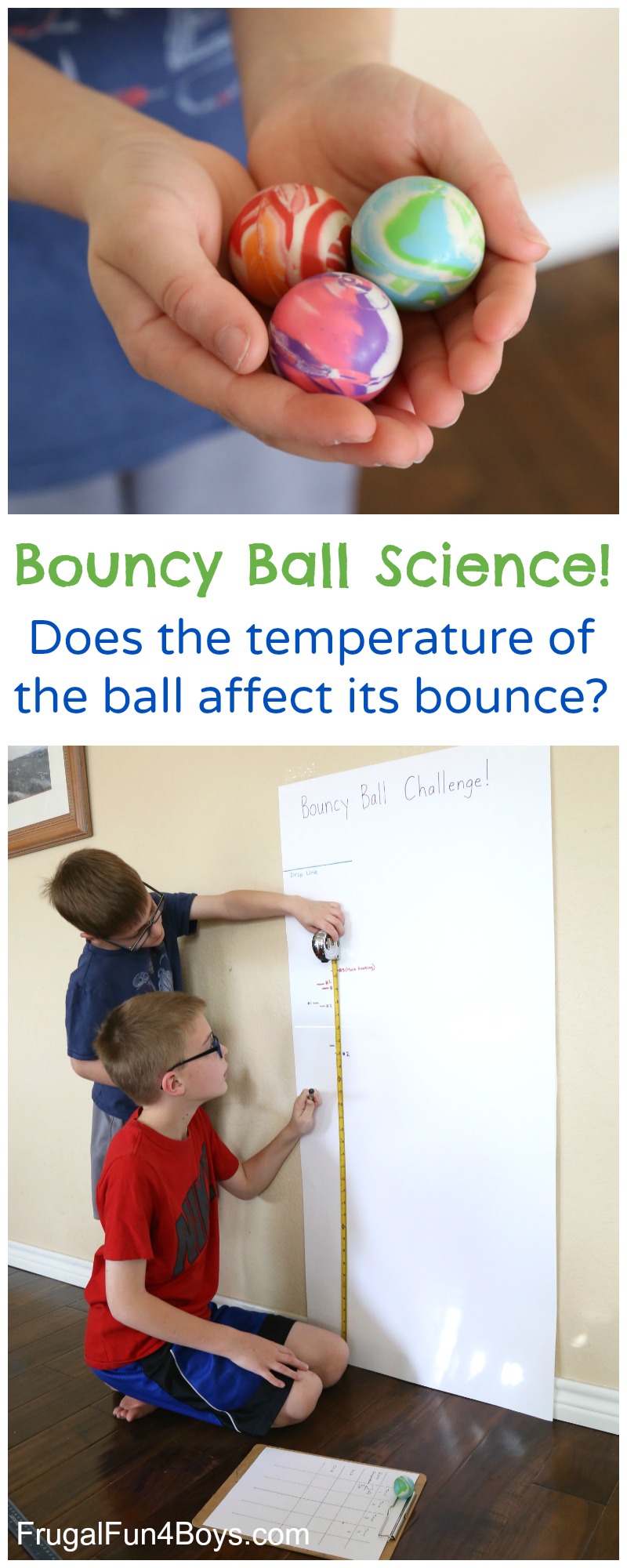
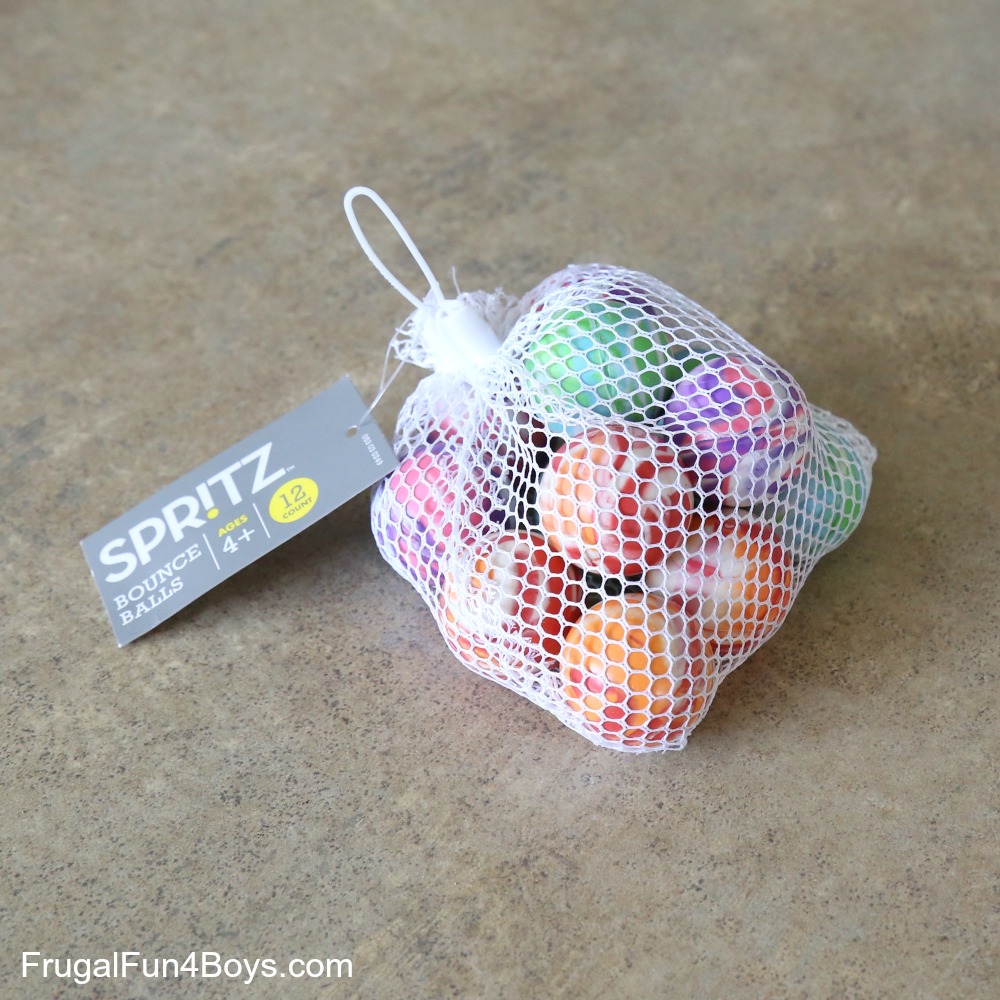
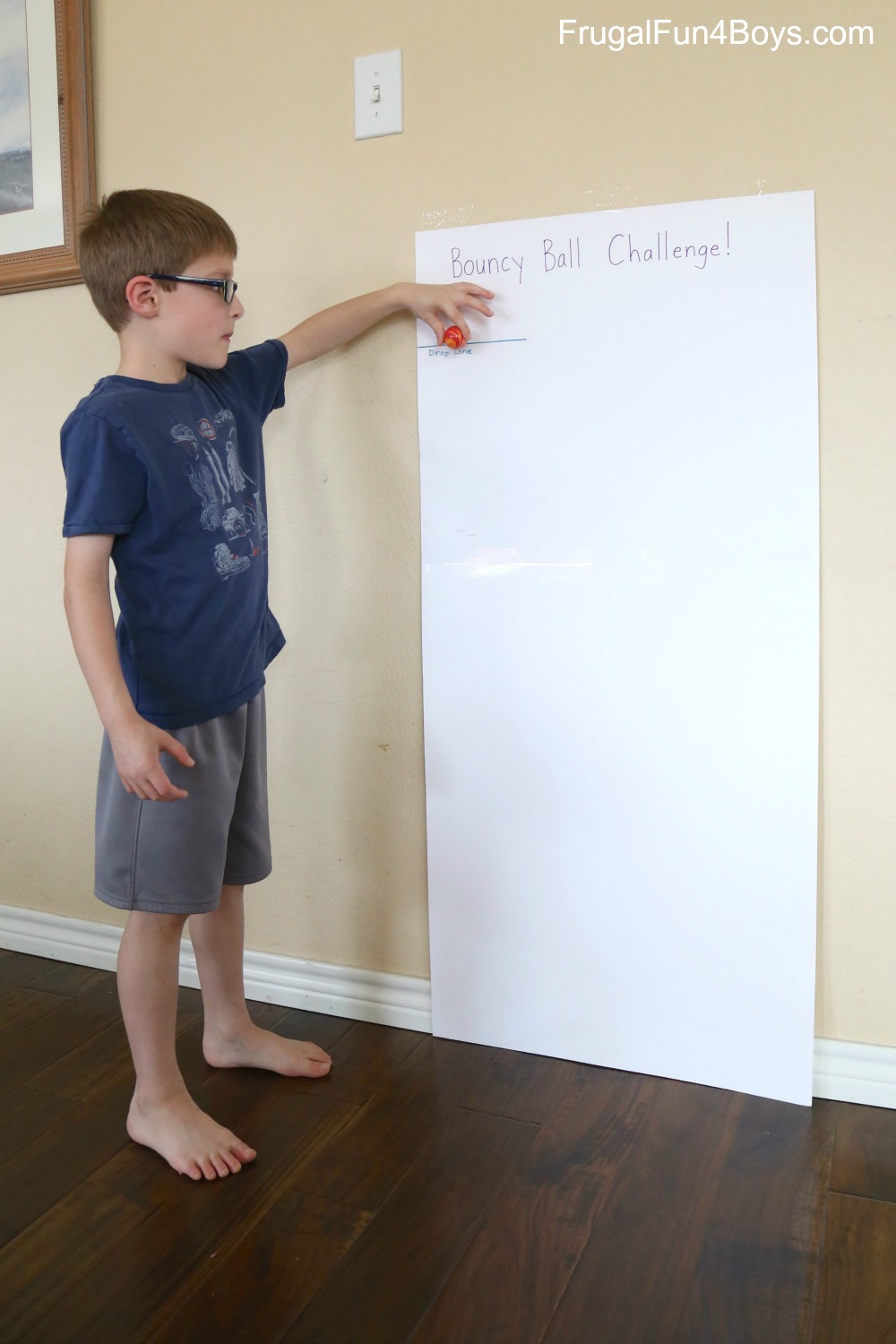

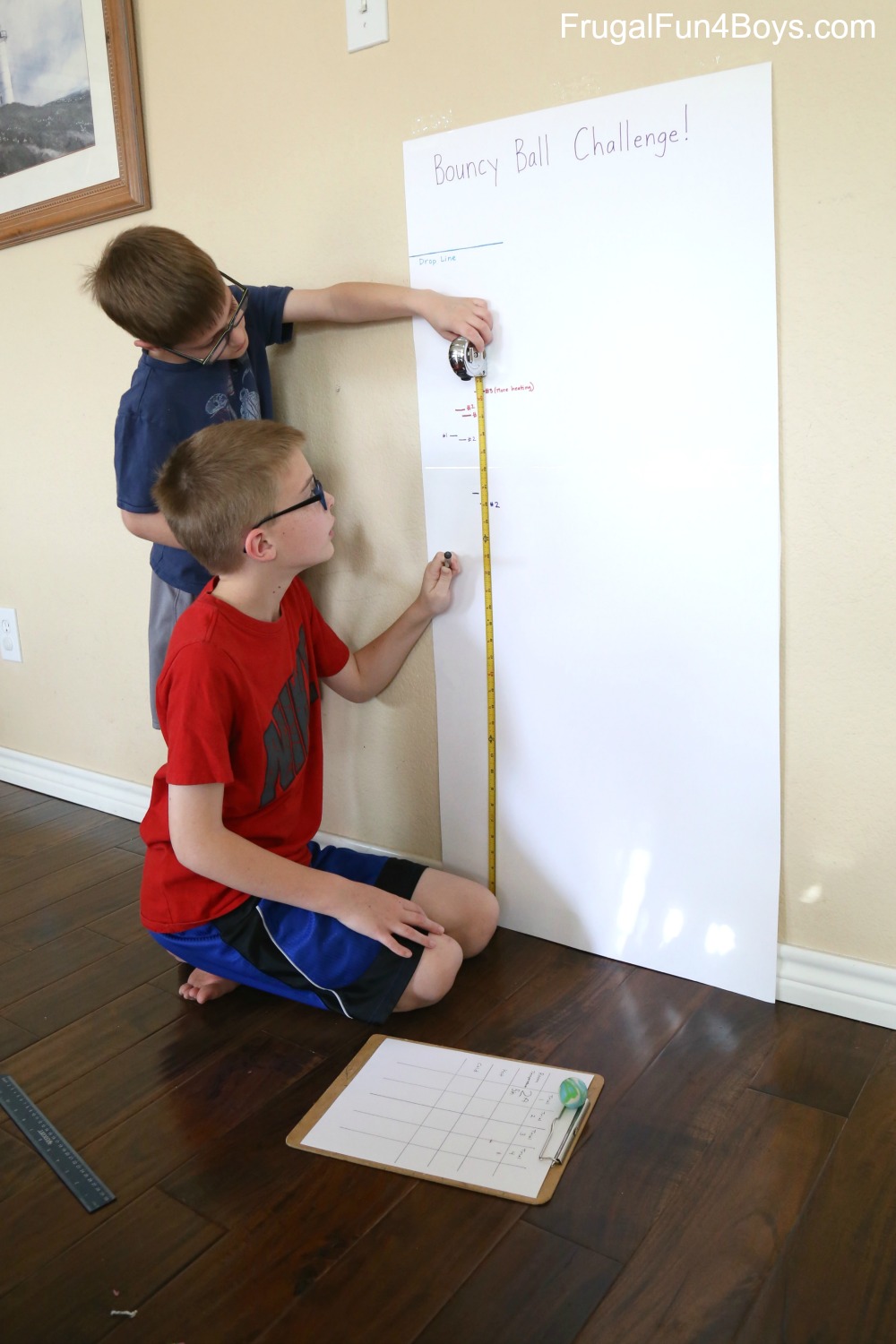
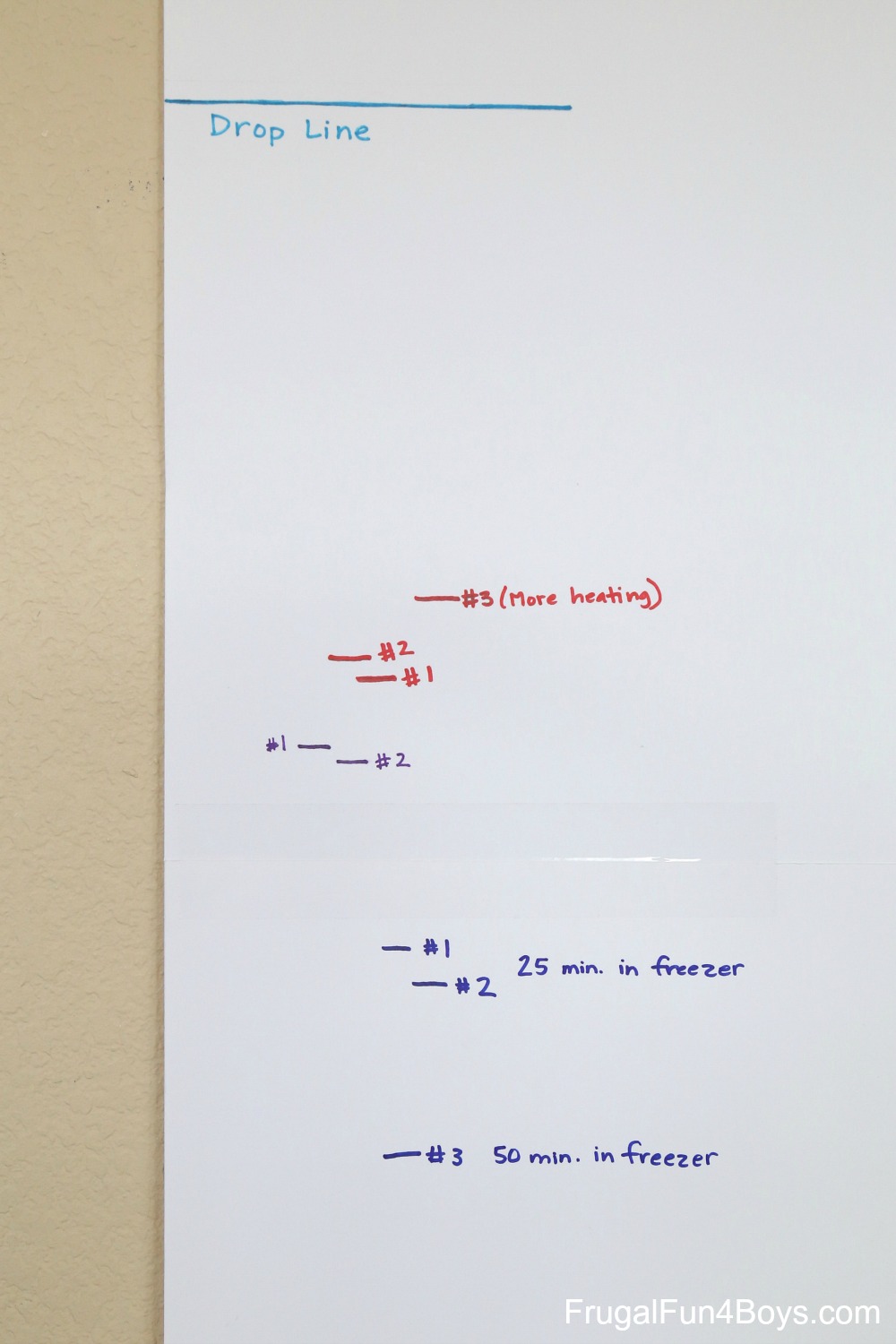
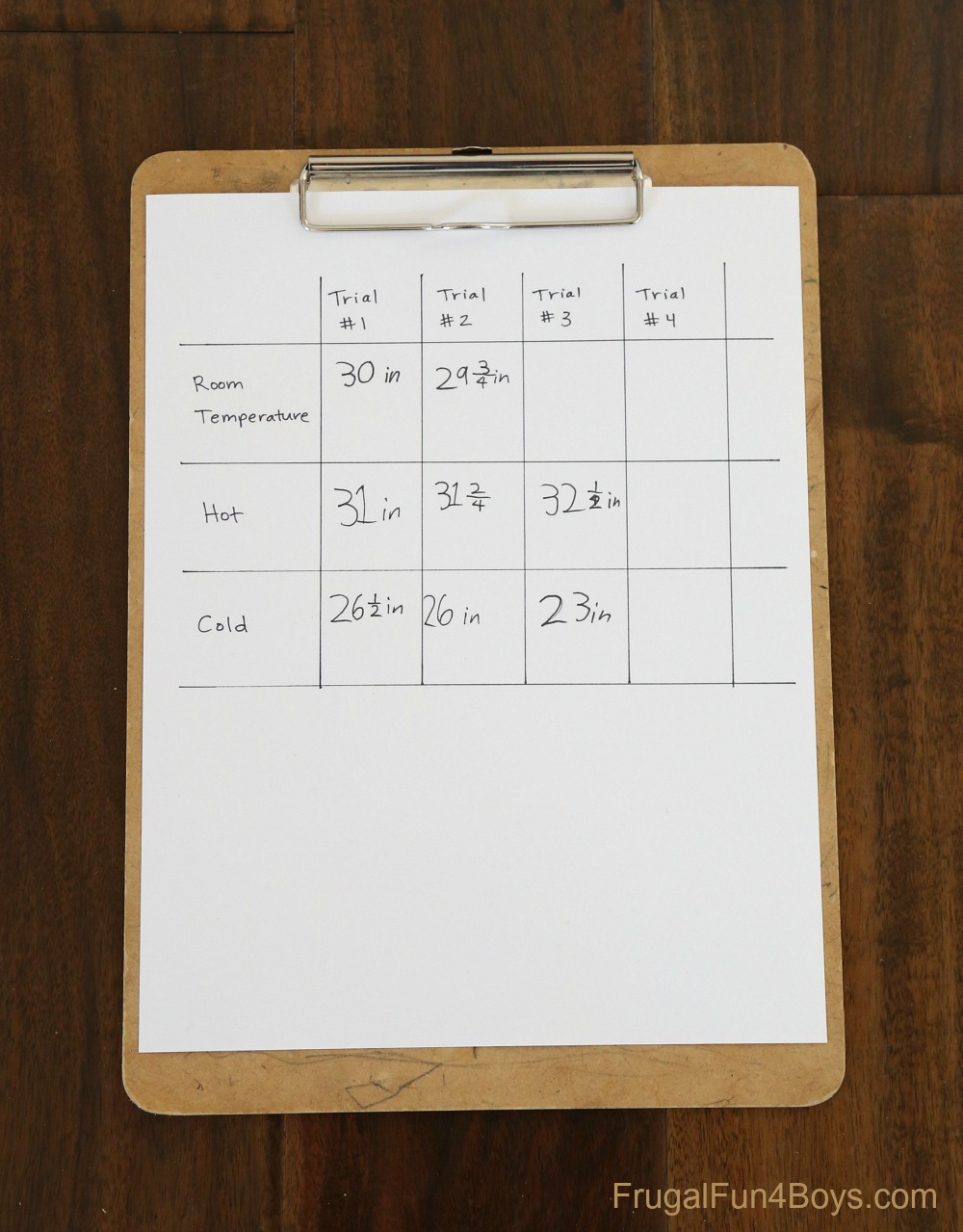
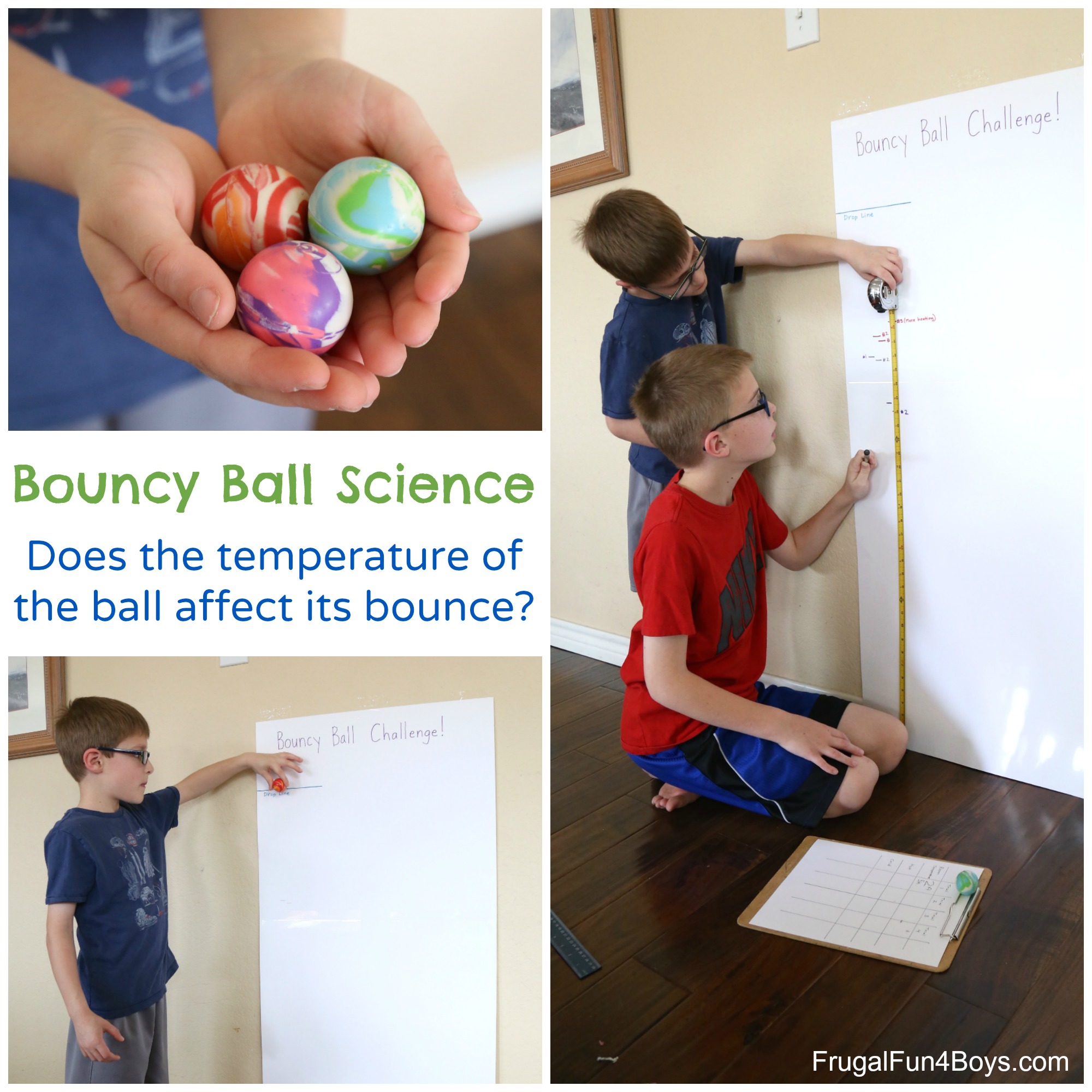
3 Comments
Isabella Mar 12, 2018
i am doing a science fair project on this
Isabella Mar 12, 2018
lol soooooo funny
Janette Paoletti Feb 25, 2019
We are doing a science fair project! Thank you so much for direction.
Post a Comment